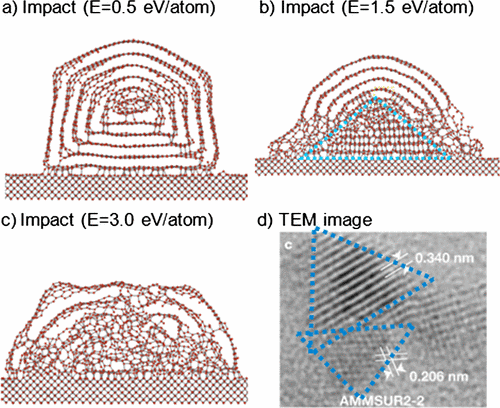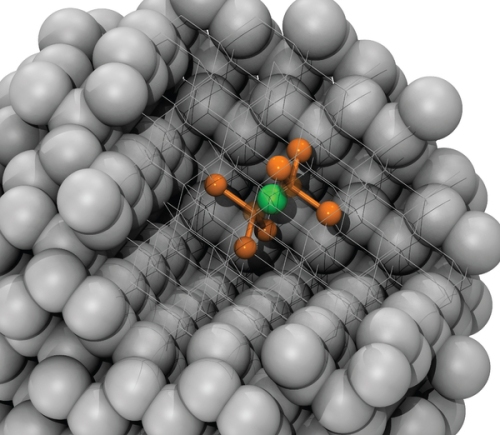How many of us have ever heard the phrase “Like a diamond in the sky”? There is actually some truth to this expression that astronomers have known for many years. There are in fact tiny, shiny, and colorful diamonds in outer space. One piece of evidence of their existence is their presence in meteorites found on Earth. For quite some time scientists have been curious about the diamonds found within meteorites, which are only 2 to 10 nanometers in size. Recent studies have also identified an area in space where nanodiamonds may be found, as well as information about their possible origin and details about their composition.

The first question that may come to one’s mind is where to look for nanodiamonds in the sky. In order to locate diamonds in the sky, scientists exploit their optical properties, or how they respond to light. Excitation of the nanodiamonds by light in laboratory studies has revealed a signature mark in the infrared section of the electromagnetic spectrum [1]. This means that nanodiamonds reflect a very characteristic light that enables us to locate them in space. Researchers at NASA think they have found meteoritic nanodiamond spectra near hot stars [2], which are stars with surface temperatures over 17,540 °F that emit blue light. Astronomers were never able to find nanodiamonds in space before because they did not know enough about the nanodiamond spectrum signature and they were not looking in the right place [3].
Current ideas about the origin of interstellar nanodiamonds suggest that they formed well before our solar system was shaped. It seems that nanodiamonds formed a long time ago in outer space, and some experts suggest that they possibly formed after an interstellar explosion. However, another idea about nanodiamond formation involves the transformation of interstellar fullerenes. As explained in a previous blog post fullerenes are a naturally occurring form of carbon that have at least one dimension on the nano scale. They can also be present in space [4], and from computational analysis of space dust collisions, Australian scientists propose the transformation of space fullerenes as precursors to space nanodiamonds [5]. In the proposed mechanism fullerenes first combine to form a very tight configuration called multishell concentric fullerenes or “carbon onions”. Next, these carbon onion structures smash into each other and form a conical structure that is characteristic of diamonds. In this nanodiamond recipe, it is important that the collision of the carbon onions occurs at the correct speed. Too slow, and the collision won’t be strong enough to form any diamonds. On the other hand, if the speed is too fast the onion assembly will simply be destroyed.


Even though scientists have made enormous progress in the study of these intergalactic nanodiamond travellers, there are many questions about them that remain unanswered. One very important question that stellar nanodiamonds may help answer is about the origins of our solar system. I am certainly sure that next time you look to the sky on a starry night, you will remember that diamonds really exist beyond the terrestrial atmosphere.
REFERENCES (many require subscription)
3. Vu, L. Spitzer’s Eyes Perfect for Spotting Diamonds in the Sky. 2008; Available from: http://www.jpl.nasa.gov/news/news.php?feature=1616.
5. Marks, N.A., M. Lattemann, and D.R. McKenzie, Nonequilibrium Route to Nanodiamond with Astrophysical Implications. Physical Review Letters, 2012. 108(7). Note regarding image: Readers may view, browse, and/or download material for temporary copying purposes only, provided these uses are for noncommercial personal purposes. Except as provided by law, this material may not be further reproduced, distributed, transmitted, modified, adapted, performed, displayed, published, or sold in whole or part, without prior written permission from the American Physical Society.
